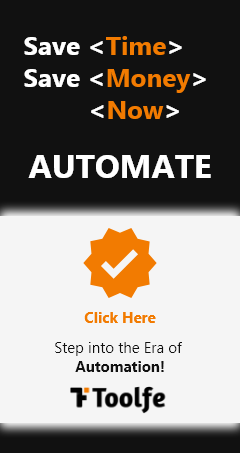
Introduction
Selecting the right ERP for your business is a high-stakes decision—one misstep, and you could face inefficiencies,
hidden costs, and frustrated employees. But making the right choice? That leads to seamless operations, improved
productivity, and scalable growth.
At Toolfe, we simplify this complex process. In this guide, we’ll walk you through a step-by-step approach to ensure
you choose an ERP that aligns perfectly with your business goals.
Introduction to ERP Selection
Without a clear roadmap, ERP selection can be overwhelming. That’s why defining your objectives, setting key success metrics, and aligning your ERP goals with business needs is the first step toward making the right decision.
Feature Assessment
Not all ERPs are created equal, and choosing one without assessing your business requirements is a costly mistake.
Identify the must-have features that will drive efficiency and eliminate bottlenecks in your workflows.
Executive and Team Support
An ERP implementation impacts every department—making leadership buy-in and team support non-negotiable.
Secure a committed executive sponsor and align teams early to ensure smooth adoption.
Formal Request for Proposal (RFP)
A well-crafted RFP sets the foundation for successful ERP selection. It eliminates ambiguity, ensures vendors meet your exact needs, and helps you compare options effectively.
Integration with Existing Software
Your ERP should seamlessly connect with existing tools, not create new data silos. Ensure compatibility with legacy applications and prioritize solutions that support industry-standard APIs like REST and SOAP.
Functional Fit
An ERP that works for another company may not work for you. Assess whether the system aligns with your industry specific workflows, both now and in the future, to avoid costly replacements down the road.
Vendor Reputation
Not all ERP providers deliver what they promise. Research vendor track records, check client testimonials, and evaluate their ability to provide long-term support and updates.
Cost Considerations
ERP pricing isn’t just about the upfront cost—it’s about the total cost of ownership. Consider licensing fees, implementation expenses, maintenance costs, and expected ROI to make an informed investment.
Data Cleanup
Migrating bad data into a new ERP is like pouring dirty water into a clean glass. Conduct a thorough data audit, eliminate redundancies, and ensure accuracy before transitioning to the new system.
Implementation Process
ERP implementation isn’t just plug-and-play—it requires careful planning, training, and phased rollouts. Map out a clear implementation timeline and prepare your teams for the transition.
Ongoing Support
Your ERP journey doesn’t end after implementation. Reliable vendor support, regular updates, and user training are critical for maximizing your system’s long-term efficiency.
Core Features of ERP Systems
From inventory management to financial tracking, ERPs come with a variety of features. Identify the core functionalities that matter most for your business needs.
Consequences of Choosing the Wrong ERP
Making the wrong ERP choice can lead to operational chaos, skyrocketing costs, and unhappy employees. Avoid this by conducting thorough research and ensuring alignment with your business strategy.
Benefits of Choosing NetSuite
Looking for a trusted ERP solution? NetSuite offers scalability, automation, and seamless integrations—making it a strong contender for businesses aiming for long-term growth.
ERP Selection FAQs
Still have questions? From customization options to vendor comparisons, we address the most common ERP selection concerns to help you make a confident decision.
Conclusion
Choosing the right ERP isn’t just a software decision—it’s a strategic move that shapes the future of your business. By following these steps, you minimize risks, streamline operations, and ensure a solid return on investment.


